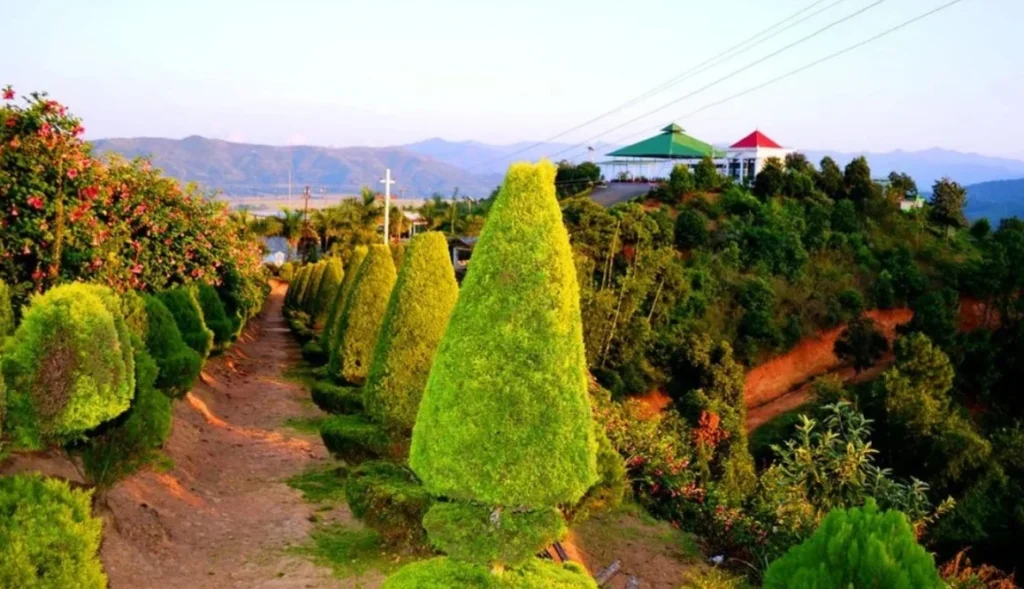Discover the cultural splendor of Kakching District, Manipur! Explore scenic landscapes, vibrant traditions, historic sites, and the beauty of nature.

Explore the Scenic Charm of Kakching District!
Nestled in the northeastern state of Manipur, India, lies the picturesque Kakching District, a region brimming with natural beauty, cultural diversity, and historical significance. Covering an area of approximately 579 square kilometers, Kakching District is a microcosm of Manipur’s rich tapestry of traditions, history, and development.
Geographically, Kakching is characterized by its lush green landscapes, rolling hills, and fertile plains. The district’s name, “Kakching,” is believed to be derived from the local Meitei language, where “Kak” means “Tiger” and “Ching” means “Clear Water.” This name reflects the district’s natural beauty and abundant water resources, with numerous rivers and lakes contributing to the region’s prosperity.
One of the district’s notable features is the Loktak Lake, which is the largest freshwater lake in Northeast India and serves as a lifeline for many communities in the region. The district also boasts numerous agricultural fields, which contribute significantly to Manipur’s overall food production.
Kakching is home to a diverse population, primarily consisting of Meiteis, Manipur’s dominant ethnic group, along with several indigenous communities and migrant populations. This diversity has resulted in a rich tapestry of cultures and traditions that coexist harmoniously. Festivals like Yaoshang, Ningol Chakouba, and Lai Haraoba are celebrated with great enthusiasm, reflecting the cultural vibrancy of the district.
Historically, Kakching has played a vital role in Manipur’s history. The district witnessed several important events during the Anglo-Manipur War of 1891, which eventually led to Manipur’s integration into British India. Today, Kakching stands as a testament to the resilience and heritage of the Manipuri people.
In recent years, Kakching has made significant strides in terms of development. The district is connected by a network of roads, facilitating better connectivity with neighboring regions. This connectivity has boosted trade and commerce, promoting economic growth and creating opportunities for local businesses.
Education has also seen improvements in Kakching, with the establishment of schools and colleges that provide quality education to the youth. The district’s literacy rate has been on the rise, empowering the younger generation with knowledge and skills to secure a brighter future.
Agriculture remains the backbone of Kakching’s economy, with the majority of the population engaged in farming activities. Paddy, sugarcane, and fish farming are some of the prominent agricultural practices in the district. Efforts to introduce modern farming techniques and diversify agricultural production have led to increased yields and income for farmers.
Kakching District, with its blend of natural beauty, cultural diversity, and developmental progress, is a testament to the potential of Manipur as a whole. As the district continues to evolve and embrace the challenges of the modern world, it does so while preserving its cultural heritage and natural resources. For those seeking a glimpse into the heart of Manipur, Kakching District offers a captivating and enriching experience that combines tradition and progress in perfect harmony.
Famous Places in Kakching District
Kakching District in Manipur, India, is adorned with several famous places that showcase the region’s cultural, historical, and natural treasures. Here are some notable destinations to explore:
Loktak Lake: Known as the largest freshwater lake in Northeast India, Loktak Lake is a mesmerizing sight. The lake is dotted with “phumdis,” floating islands made of vegetation, and is famous for its picturesque landscapes, boat rides, and the Keibul Lamjao National Park, which is home to the endangered Sangai deer.
Kakching Garden: A serene oasis in the heart of Kakching town, this garden offers a peaceful escape. It’s an ideal spot for a leisurely stroll amidst colorful flowers, well-manicured lawns, and soothing ambiance.
Kakching Khunou: This village is renowned for its traditional pottery making. Visitors can witness skilled artisans crafting intricate pottery items, showcasing the rich heritage of the region’s craftsmanship.
Kakching Lamkhai: A cultural hub, Kakching Lamkhai hosts various festivals and events throughout the year. The Lamkhai Festival, in particular, celebrates the district’s culture, with traditional dances, music, and local cuisine.
Kakching Thoubal River: This river, flowing through the district, offers opportunities for angling and picnics along its banks. The lush greenery and serene waters create a perfect backdrop for relaxation.
Lilong Chajing: Known for its historical significance, this locality is home to ancient temples and monuments, including the Lilong Chajing Pukhri Mapal, a historical lake, and the tomb of Syed Pira, an important religious site.
Charangpat: A picturesque village in Kakching District, Charangpat is famous for its beautiful landscapes and the Charangpat Lake. The lake attracts migratory birds, making it a paradise for birdwatchers and nature enthusiasts.
Thoubal: While technically a separate district, Thoubal is in close proximity to Kakching and is worth a visit. The Thoubal district is known for the Ithai Barrage, which forms the Loktak Lake, and the Thoubal Dam, providing irrigation and hydropower to the region.
These famous places in Kakching District offer a delightful blend of natural beauty, cultural heritage, and historical significance. Whether you’re interested in exploring the region’s natural wonders or immersing yourself in its rich traditions, Kakching has something to offer every traveler.
Read More :-
